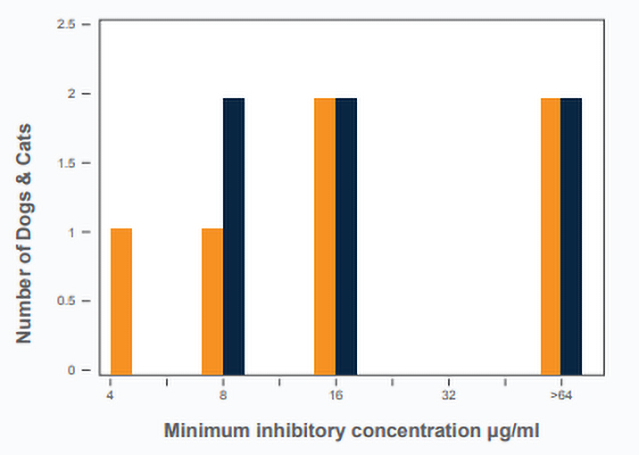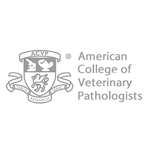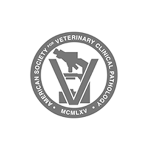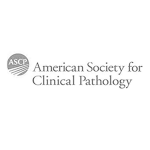Treatment of Histoplasmosis in Dogs and Cats
Introduction
A retrospective study in dogs reported that 71% responded to itraconazole and 17% relapsed [1Wilson AG, KuKanich KS, Hanzlicek AS, et al. Clinical signs, treatment, and prognostic factors for dogs with histoplasmosis. J Am Vet Med Assoc 2018;252:201-209.]. Combining data from 3 retrospective studies in cats, 68/79 (86%) of those treated with itraconazole survived to hospital discharge [2Reinhart JM, KuKanich KS, Jackson T, et al. Feline histoplasmosis: fluconazole therapy and identification of potential sources of Histoplasma species exposure. J Feline Med Surg 2012;14:841-848., 3Hodges RD, Legendre AM, Adams LG, et al. Itraconazole for the treatment of histoplasmosis in cats. J Vet Intern Med 1994;8:409-413., 4Ludwig HC, Hanzlicek AS, KuKanich KS, et al. Candidate prognostic indicators in cats with histoplasmosis treated with antifungal therapy. J Feline Med Surg 2018;20:985-996.]. Since histoplasmosis is often chronic and requires long term treatment, longer term survival is arguably more important and in one study, 6-month survival with itraconazole was 35/53 (66%) [4Ludwig HC, Hanzlicek AS, KuKanich KS, et al. Candidate prognostic indicators in cats with histoplasmosis treated with antifungal therapy. J Feline Med Surg 2018;20:985-996.]. Relapse rates were reported in 3 studies and occurred in 8/36 (22%) of cats receiving itraconazole [2Reinhart JM, KuKanich KS, Jackson T, et al. Feline histoplasmosis: fluconazole therapy and identification of potential sources of Histoplasma species exposure. J Feline Med Surg 2012;14:841-848., 3Hodges RD, Legendre AM, Adams LG, et al. Itraconazole for the treatment of histoplasmosis in cats. J Vet Intern Med 1994;8:409-413., 5Hanzlicek AS, Meinkoth JH, Renschler JS, et al. Antigen Concentrations as an Indicator of Clinical Remission and Disease Relapse in Cats with Histoplasmosis. J Vet Intern Med 2016;30:1065-1073.]. Retrospective design, small sample size and inclusion of cases spanning over several years were serious limitations of these studies. These limitations preclude determination of the best treatment based on veterinary studies.
Prospective studies in humans with AIDS found itraconazole to be more effective than fluconazole (Table 1) [6Wheat J, Hafner R, Korzun AH, et al. Itraconazole treatment of disseminated histoplasmosis in patients with the acquired immunodeficiency syndrome. AIDS Clinical Trial Group. Am J Med 1995;98:336-342., 7Wheat J, MaWhinney S, Hafner R, et al. Treatment of histoplasmosis with fluconazole in patients with acquired immunodeficiency syndrome. National Institute of Allergy and Infectious Diseases Acquired Immunodeficiency Syndrome Clinical Trials Group and Mycoses Study Group. Am J Med 1997;103:223-232.]. 85% of patients responded to itraconazole and none relapsed with at least one year of follow-up. Of the 9 nonresponders, only 5 (8%) were attributed to progressive histoplasmosis. 74% of patients treated with fluconazole responded, of which 30% relapsed when the dosage was reduced from 800 mg daily during the first 12 weeks to 400 mg daily as maintenance therapy [7Wheat J, MaWhinney S, Hafner R, et al. Treatment of histoplasmosis with fluconazole in patients with acquired immunodeficiency syndrome. National Institute of Allergy and Infectious Diseases Acquired Immunodeficiency Syndrome Clinical Trials Group and Mycoses Study Group. Am J Med 1997;103:223-232.]. One-year relapse rate was estimated to be 53%. Fluconazole and itraconazole susceptibility were assessed in Histoplasma isolates from patients who failed fluconazole[8Wheat LJ, Connolly P, Smedema M, et al. Emergence of resistance to fluconazole as a cause of failure during treatment of histoplasmosis in patients with acquired immunodeficiency disease syndrome. Clin Infect Dis 2001;33:1910-1913.]: Resistance developed to fluconazole in 59% of failure isolates and to itraconazole in none.
Treatment
FDA approved itraconazole is recommended for treatment of histoplasmosis in dogs and cats and humans [9Sykes JE and Toboada J. Histoplasmosis. in Canine and Feline Infectious Diseases. Sykes JE Ed. St. Louis, MO: Elsevier Saunders; 2019., 10Wheat LJ, Freifeld AG, Kleiman MB, et al. Clinical practice guidelines for the management of patients with histoplasmosis: 2007 update by the Infectious Diseases Society of America. Clin Infect Dis 2007;45:807-825.]. Generic FDA approved itraconazole capsules are less expensive than Sporanox® capsules and achieves similar concentrations in the blood. FDA approved itraconazole solution, Itrafungol®, labelled for dermatophytosis in cats is considered equivalent to Sporanox® solution. Compounded itraconazole powder should not be used as blood levels are undetectable or very low [9Sykes JE and Toboada J. Histoplasmosis. in Canine and Feline Infectious Diseases. Sykes JE Ed. St. Louis, MO: Elsevier Saunders; 2019., 11Renschler J, Albers A, Sinclair-Mackling H, et al. Comparison of Compounded, Generic, and Innovator-Formulated Itraconazole in Dogs and Cats. J Am Anim Hosp Assoc 2018;54:195-200., 12Mawby DI, Whittemore JC, Genger S, et al. Bioequivalence of orally administered generic, compounded, and innovator-formulated itraconazole in healthy dogs. J Vet Intern Med 2014;28:72-77., 13Mawby DI, Whittemore JC, Fowler LE, et al. Comparison of absorption characteristics of oral reference and compounded itraconazole formulations in healthy cats. J Am Vet Med Assoc 2018;252:195-200.]. Guidance for use of itraconazole for treatment of dogs and cats with histoplasmosis is reviewed below.
Life-Threatening Illness.
Euthanasia may be avoided by an aggressive approach to life-threatening illness (Table 1). Lipid or liposomal encapsulated amphotericin B (Abelcet® or Ambisome® is recommended at a dosage of 1.0 mg/kg (dog) or 0.5 mg/kg (cat) three times weekly (or every other day) by intravenous infusion over 4-6 hours for cumulative doses up to 12 mg/kg (cat) or 24 mg/kg (dog) [14Krawiec DR, McKiernan BC, Twardock AR, et al. Use of an amphotericin B lipid complex for treatment of blastomycosis in dogs. J Am Vet Med Assoc 1996;209:2073-2075., 15Taboada C and Grooters AM. Histoplasmosis, blastomycosis, sporotrichosis, candidiasis, pythiosis, and legneidiosis. In Textbook of Veterinary Internal Medicine: Diseases of the Dog and Cat, 5th ed. Ettinger SJ and Feldman EC Eds. St. Louis MO. W.B. Saunders; 2000.]. Renal function, electrolytes, and potassium levels should be monitored during treatment. Respiratory failure is the cause of death in most cases and supplemental oxygen is appropriate. Reasons that amphotericin B is more effective than itraconazole include immediate achievement of therapeutic blood levels and its fungicidal mode of action: Itraconazole requires up to a week to reach therapeutic levels and is fungistatic.
Anti-inflammatory treatment with low doses of corticosteroids may be helpful in reducing systemic side effects of amphotericin B (fever, chills, lethargy) and clinical worsening attributed to inflammatory reaction to antigens released from “dying” Histoplasma organisms.
Treatment Ocular Disease.
While itraconazole is the most effective treatment for histoplasmosis, some veterinary ophthalmologists prefer fluconazole because of higher penetration into ocular tissue and fluid [16Felton T, Troke PF, Hope WW. Tissue penetration of antifungal agents. Clin Microbiol Rev 2014;27:68-88.]. Itraconazole penetrates aqueous fluid, vitreous fluid and cornea poorly but was effective in cats with ocular histoplasmosis [3Hodges RD, Legendre AM, Adams LG, et al. Itraconazole for the treatment of histoplasmosis in cats. J Vet Intern Med 1994;8:409-413., 16Felton T, Troke PF, Hope WW. Tissue penetration of antifungal agents. Clin Microbiol Rev 2014;27:68-88., 17Bromel C, Sykes JE. Histoplasmosis in dogs and cats. Clin Tech Small Anim Pract 2005;20:227-232.]. Clinical experience suggests that some dogs and cats with ocular histoplasmosis will respond to itraconazole after incomplete response to fluconazole, suggesting that the lower itraconazole concentrations in the eye are offset by the inherent higher sensitivity of Histoplasma to itraconazole. Studies are needed to determine the best treatment of ocular histoplasmosis in dogs and cats.
Treatment CNS Disease.
There is a paucity of information regarding the treatment of CNS histoplasmosis in veterinary patients. In cats, CNS involvement was found in 3% of histoplasmosis cases and was a negative prognostic indicator for survival at 1 and 6 months after diagnosis [4Ludwig HC, Hanzlicek AS, KuKanich KS, et al. Candidate prognostic indicators in cats with histoplasmosis treated with antifungal therapy. J Feline Med Surg 2018;20:985-996.]. In dogs, CNS involvement was found in 4% of histoplasmosis cases and none of the dogs survived long term (>6 months) [1Wilson AG, KuKanich KS, Hanzlicek AS, et al. Clinical signs, treatment, and prognostic factors for dogs with histoplasmosis. J Am Vet Med Assoc 2018;252:201-209.]. In humans, a lipid formulation of amphotericin B followed by step down therapy with itraconazole is recommended [10Wheat LJ, Freifeld AG, Kleiman MB, et al. Clinical practice guidelines for the management of patients with histoplasmosis: 2007 update by the Infectious Diseases Society of America. Clin Infect Dis 2007;45:807-825.]. Itraconazole penetrates CSF poorly but achieves good concentration in brain tissue [16Felton T, Troke PF, Hope WW. Tissue penetration of antifungal agents. Clin Microbiol Rev 2014;27:68-88.]. Concern has been raised that itraconazole may not be effective because of poor CSF penetration, however CSF penetration may not be important. Itraconazole was equally as effective as amphotericin B and more effective than fluconazole, which penetrates CSF well, in an experimental model of Histoplasma meningitis [18Haynes RR, Connolly PA, Durkin MM, et al. Antifungal therapy for central nervous system histoplasmosis, using a newly developed intracranial model of infection. J Infect Dis 2002;185:1830-1832.]. Itraconazole and fluconazole were equally effective in a rabbit model of Coccidioides meningitis, and itraconazole was effective for salvage treatment in patients who failed standard therapy for Coccidioides meningitis [19Sorensen KN, Sobel RA, Clemons KV, et al. Comparison of fluconazole and itraconazole in a rabbit model of coccidioidal meningitis. Antimicrob Agents Chemother 2000;44:1512-1517., 20Tucker RM, Denning DW, Dupont B, et al. Itraconazole therapy for chronic coccidioidal meningitis. Ann Intern Med 1990;112:108-112.].
Combined Treatment with Terbinafine.
Some veterinarians recommend terbinafine in combination with other antifungal agents in dogs or cats failing treatment. In vitro activity has been demonstrated with MICs below 0.39 µg/ml in 90% of strains [21Shadomy S, Espinel-Ingroff A, Gebhart RJ. In-vitro studies with SF 86-327, a new orally active allylamine derivative. Sabouraudia 1985;23:125-132.]. Pharmacokinetic studies in dogs demonstrate that blood levels exceed MICs of Blastomyces dermatitidis, Histoplasma capsulatum and Coccidioides immitis [22Sakai MR, May ER, Imerman PM, et al. Terbinafine pharmacokinetics after single dose oral administration in the dog. Vet Derm 2011;22:528-534.]. Moreover, in vivo animal studies suggest terbinafine may be effective in treating histoplasmosis [23Hay RJ. Therapeutic potential of terbinafine in subcutaneous and systemic mycoses. Br J Dermatol 1999;141 Suppl 56:36-40.].
Role of anti-inflammatory treatment.
A retrospective study showed that cats that received corticosteroids were significantly less likely to survive to hospital discharge or 1 month after diagnosis [4Ludwig HC, Hanzlicek AS, KuKanich KS, et al. Candidate prognostic indicators in cats with histoplasmosis treated with antifungal therapy. J Feline Med Surg 2018;20:985-996.]. This study was likely confounded by the fact that corticosteroids were likely used in cats with more severe respiratory disease, which was also shown to be a negative prognostic indicator. Corticosteroids, mostly in conjunction with antifungals, were effective at resolving tracheobronchial lymphadenopathy in dogs with probable histoplasmosis [24Schulman RL, McKiernan BC, Schaeffer DJ. Use of corticosteroids for treating dogs with airway obstruction secondary to hilar lymphadenopathy caused by chronic histoplasmosis: 16 cases (1979-1997). J Am Vet Med Assoc 1999;214:1345-1348.]. Studies in humans with acute respiratory distress syndrome (ARDS) of any cause showed no benefit from use of corticosteroids [25Hough CL. Steroids for acute respiratory distress syndrome? Clin Chest Med 2014;35:781-795.]. The clinical use of anti-inflammatory treatment (low dose corticosteroid) to reduce fever, malaise, and lethargy, potentially hastening clinical improvement, is common in veterinary medicine, but there are no studies to establish benefit. Further research regarding the use of corticosteroids in dogs and cats with histoplasmosis are needed.
Formulation.
Generic FDA approved itraconazole, compounded FDA approved itraconazole capsules (see below), and brand name Sporanox® capsules contain “pelletized” drug coated onto spheres and polyethylene glycol, which improves absorption. Itraconazole capsules should be administered with food for better absorption (see Sporanox® capsule package insert). Sporanox® and Itrafungol® oral solutions contain cyclodextrin which improves bioavailability. Blood levels of itraconazole are similar with FDA approved brand name Sporanox® and generic FDA approved itraconazole [11Renschler J, Albers A, Sinclair-Mackling H, et al. Comparison of Compounded, Generic, and Innovator-Formulated Itraconazole in Dogs and Cats. J Am Anim Hosp Assoc 2018;54:195-200., 12Mawby DI, Whittemore JC, Genger S, et al. Bioequivalence of orally administered generic, compounded, and innovator-formulated itraconazole in healthy dogs. J Vet Intern Med 2014;28:72-77., 13Mawby DI, Whittemore JC, Fowler LE, et al. Comparison of absorption characteristics of oral reference and compounded itraconazole formulations in healthy cats. J Am Vet Med Assoc 2018;252:195-200.]. Compounded itraconazole powder should not be used as blood levels are undetectable or very low [11Renschler J, Albers A, Sinclair-Mackling H, et al. Comparison of Compounded, Generic, and Innovator-Formulated Itraconazole in Dogs and Cats. J Am Anim Hosp Assoc 2018;54:195-200., 12Mawby DI, Whittemore JC, Genger S, et al. Bioequivalence of orally administered generic, compounded, and innovator-formulated itraconazole in healthy dogs. J Vet Intern Med 2014;28:72-77., 13Mawby DI, Whittemore JC, Fowler LE, et al. Comparison of absorption characteristics of oral reference and compounded itraconazole formulations in healthy cats. J Am Vet Med Assoc 2018;252:195-200.].
Dosage.
Itraconazole should be administered at 5 mg/kg twice daily for 3 days and then 5 mg/kg once daily in dogs. In cats receiving capsules, 5 mg/kg twice daily or 10 mg/kg once daily is appropriate, while a lower starting dose with the solution (7.5 mg/kg/day) should be considered [9Sykes JE and Toboada J. Histoplasmosis. in Canine and Feline Infectious Diseases. Sykes JE Ed. St. Louis, MO: Elsevier Saunders; 2019., 13Mawby DI, Whittemore JC, Fowler LE, et al. Comparison of absorption characteristics of oral reference and compounded itraconazole formulations in healthy cats. J Am Vet Med Assoc 2018;252:195-200.]. Itraconazole blood levels should be measured after 2 weeks in dogs and 3 weeks in cats to verify that blood levels are in the therapeutic range (2-7 mcg/mL). Dosage may need to be increased in puppies or kittens that gain weight during treatment: consider repeating blood levels at 1-2 months intervals until weight stabilizes. Dose also may need to be increased in animals that lost considerable weight before itraconazole was started.
Small dogs and cats pose challenges for use of 100 mg capsules. Alternatives include Itrafungol® or Sporanox® solution (more expensive than generic itraconazole) and compounded pelletized itraconazole capsules. At least two veterinary pharmacies provide that service: Pet Health (623-214-2791); The Pet Apothecary (414-247-8633).
Alternatively, some veterinarians prescribe 100 mg generic FDA approved capsules and instruct the pet owners to empty the capsules onto a hard surface and divide the pellets into roughly equal size piles in dosages appropriate for the weight of the dog. They instruct the owners to coat the pellets onto peanut butter for administration. Finally, findings of a pharmacokinetic study support the use of 100 mg itraconazole capsules once every other day in cats [26Middleton SM, Kubier A, Dirikolu L, et al. Alternate-day dosing of itraconazole in healthy adult cats. J Vet Pharmacol Ther 2016;39:27-31.].
Therapeutic drug level monitoring.
It’s important to obtain serum for trough (just before next dose) itraconazole blood level at the end of 2 weeks in dogs and 3 weeks in cats to verify that concentrations are between 2-7 mcg/mL. A dosage change is recommended if concentrations are outside that range. Blood levels should be determined again following a dosage change to verify levels between 2-7 mcg/mL. Itraconazole blood level testing, measured by bioassay, is offered at MiraVista Diagnostics.
Duration.
At least 6 months of itraconazole is recommended in humans and dogs and cats [9Sykes JE and Toboada J. Histoplasmosis. in Canine and Feline Infectious Diseases. Sykes JE Ed. St. Louis, MO: Elsevier Saunders; 2019., 10Wheat LJ, Freifeld AG, Kleiman MB, et al. Clinical practice guidelines for the management of patients with histoplasmosis: 2007 update by the Infectious Diseases Society of America. Clin Infect Dis 2007;45:807-825.]. Many cases require a year or more of treatment, especially those with bone/joint, ocular, or central nervous system involvement or widespread disseminated disease [9Sykes JE and Toboada J. Histoplasmosis. in Canine and Feline Infectious Diseases. Sykes JE Ed. St. Louis, MO: Elsevier Saunders; 2019.].
Toxicity and Drug Interactions.
Toxicities are usually caused by high blood levels [27Lestner J, Hope WW. Itraconazole: an update on pharmacology and clinical use for treatment of invasive and allergic fungal infections. Expert Opin Drug Metab Toxicol 2013;9:911-926., 28Lestner JM, Roberts SA, Moore CB, et al. Toxicodynamics of itraconazole: implications for therapeutic drug monitoring. Clin Infect Dis 2009;49:928-930.]. A human study reported 31% of patients with levels below 17 µg/mL experienced toxicity compared to 86% with levels above 17.1 mcg/mL. Toxicity also occurred in 20 to 40% of patients with levels between 5 and 10 µg/mL and may occur with levels between 2-7 µg/mL. Levels above 7 mcg/mL are unnecessary and dose reduction decreases toxicity and cost.
The most common toxicities observed in humans were fluid retention (21%) and gastrointestinal intolerance (21%) [28Lestner JM, Roberts SA, Moore CB, et al. Toxicodynamics of itraconazole: implications for therapeutic drug monitoring. Clin Infect Dis 2009;49:928-930.]. Central nervous system toxicity occurred in 19%. Diffuse nonpruritic maculopapular rash (7%) resolved after stopping treatment and may be caused by hypersensitivity rather than high blood levels. Hepatic toxicity with a bilirubin greater than 3 times the reference limit occurred in 2% of humans. Congestive heart failure occurred in 1%. Itraconazole also can cause hypertension and hypokalemia, although these have not been reported in dogs and cats (see Sporanox® and Itrafungol® package inserts).
Toxicities in dogs resemble those in humans. Median alanine aminotransferase (ALT) levels were higher in dogs receiving 5 mg/kg twice daily (84 IU/L) than once daily (35 IU/L). ALT and alkaline phosphatase (ALP) elevation in the absence of clinical findings of hepatotoxicity can be managed by dose reduction or discontinuation until they have resolved, after which itraconazole could be resumed at a lower dosage [29Legendre AM, Rohrbach BW, Toal RL, et al. Treatment of blastomycosis with itraconazole in 112 dogs. J Vet Intern Med 1996;10:365-371.]. Ulcerative skin lesions (a sign of cutaneous vasculitis) also occurred in approximately 7% of dogs receiving 10 mg/kg/d. Itraconazole is a negative inotrope and should be used with caution in dogs and cats with significant heart disease.
Most toxicities resolve within a week or two after stopping or reducing the dose of itraconazole. Drug levels should be rechecked 2-3 weeks after resuming itraconazole to verify the level is therapeutic, but nontoxic. Itraconazole can be resumed at a lower dose in dogs or cats with clinical evidence of hepatotoxicity once clinical findings have resolved and ALT and ALP levels declined [29Legendre AM, Rohrbach BW, Toal RL, et al. Treatment of blastomycosis with itraconazole in 112 dogs. J Vet Intern Med 1996;10:365-371., 30Plumb D. Itraconazole. in Veterinary Drug Handbook, 9th ed. Stockholm, WI. Pharma Vet Inc.; 2018.]. ALT, ALP, bilirubin, and itraconazole blood levels should be monitored closely if itraconazole is resumed.
Itraconazole inhibits cytochrome P450 3A4 isoenzymes and may increase blood levels of drugs cleared by that mechanism. Serious drug interactions, including death, may occur when itraconazole is used with certain drugs that are cleared by CYP450 3A4. Drugs that might be affected include amitriptyline, amlodipine, benzodiazepines, cisapride, corticosteroids, cyclosporine, ivermectin, and macrolides, to name a few.
Inducers of CYP3A4, such as phenobarbital, accelerate metabolism of itraconazole and may cause treatment failure because of subtherapeutic blood levels. Drugs that decrease gastric acid secretion reduce itraconazole blood levels. Antigen monitoring. Studies in cats showed that antigen elimination was a marker for disease remission during treatment [5Hanzlicek AS, Meinkoth JH, Renschler JS, et al. Antigen Concentrations as an Indicator of Clinical Remission and Disease Relapse in Cats with Histoplasmosis. J Vet Intern Med 2016;30:1065-1073.]. The sensitivity was 90% and specificity was 65% for elimination of antigen from urine and 90% and 52% for elimination from serum. Antigen was negative in all cases at 6 months. Monitoring also assisted in diagnosis of relapse, showing increases in antigen concentration compared to prior results.
Antigen should be tested in urine at 3-month intervals during treatment, at 6 and 12 months after stopping treatment, and any time the clinical findings suggest recurrence. And if the urine antigen is “Above Limit of Quantification, ALQ” serum should be used for treatment monitoring instead. When the serum antigen is negative (or low level, <2 ng/mL) resume monitoring urine antigen until negative. Consultation should be obtained for questions about discontinuation of treatment and if antigen remains positive more than 12 months.
Failure of the antigen concentration to decline also raises concern about the effectiveness of treatment, which may be caused by inadequate itraconazole blood levels or development of resistance to fluconazole. If itraconazole levels are subtherapeutic, the dosage should be increased, and blood levels should be rechecked 14-21 days later. Increase in antigen concentration after stopping treatment suggests relapse. An example of antigen clearance in urine and serum is presented in Figure 1.

Figure 1. Example of serum and urine antigen clearance in a dog with histoplasmosis treated successfully.
Alternatives to itraconazole.
Fluconazole is not recommended as a first-line treatment because its activity against Histoplasma is low. (Figure 2 and Table 2). The fluconazole MICs, illustrated in Figure 2, are especially noteworthy as a recent population based fluconazole PK study showed mean maximal blood concentrations of 26.8 and 32.1 µg/ml for dogs and cats, respectively. Collectively these data suggest that some Histoplasma isolates infecting dogs and cats have inherent fluconazole resistance. Acquired resistance also has been described in a cat with histoplasmosis that failed fluconazole treatment [31Renschler JS, Norsworthy GD, Rakian RA, et al. Reduced susceptibility to fluconazole in a cat with histoplasmosis. JFMS Open Rep 2017;3:2055116917743364.]. Lower inherent sensitivity notwithstanding, in situations where itraconazole is not tolerated, or is cost prohibitive, fluconazole could be considered. Appropriate dose (20 mg/kg/day), treatment duration (see below) and use of FDA approved drug are important for maximizing chance of treatment success.
MICs to voriconazole are higher than to itraconazole and Histoplasma also may develop resistance to voriconazole [32Wheat LJ, Connolly P, Smedema M, et al. Activity of newer triazoles against Histoplasma capsulatum from patients with AIDS who failed fluconazole. J Antimicrob Chemother 2006;57:1235-1239.]. Histoplasma is highly susceptible to posaconazole (median MIC <0.007 mcg/mL) and isavuconazole (median MIC <0.007 mcg/mL) and resistance has not been reported to these triazoles [33Connolly P, Wheat J, Schnizlein-Bick C, et al. Comparison of a new triazole antifungal agent, Schering 56592, with itraconazole and amphotericin B for treatment of histoplasmosis in immunocompetent mice. Antimicrob Agents Chemother 1999;43:322-328., 34Spec A, Connolly P, Montejano R, et al. In vitro activity of isavuconazole against fluconazole-resistant isolates of Histoplasma capsulatum. Med Mycol 2018;56:834-837.].
Posaconazole was more effective than itraconazole in murine models of histoplasmosis and case reports describe successful treatment in patients who failed or could not take other antifungal agents [33Connolly P, Wheat J, Schnizlein-Bick C, et al. Comparison of a new triazole antifungal agent, Schering 56592, with itraconazole and amphotericin B for treatment of histoplasmosis in immunocompetent mice. Antimicrob Agents Chemother 1999;43:322-328., 35Connolly P, Wheat LJ, Schnizlein-Bick C, et al. Comparison of a new triazole, posaconazole, with itraconazole and amphotericin B for treatment of histoplasmosis following pulmonary challenge in immunocompromised mice. Antimicrob Agents Chemother 2000;44:2604-2608., 36Restrepo A, Tobon A, Clark B, et al. Salvage treatment of histoplasmosis with posaconazole. J Infect 2007;54:319-327., 37Clark B, Foster R, Tunbridge A, et al. A case of disseminated histoplasmosis successfully treated with the investigational drug posaconazole. Journal Infect 2005;51:e177-180., 38Schulze AB, Heptner B, Kessler T, et al. Progressive histoplasmosis with hemophagocytic lymphohistiocytosis and epithelioid cell granulomatosis: A case report and review of the literature. Eur J Haematol 2017;99:91-100.]. Posaconazole may be the best alternative based on MICs and limited clinical experience and isavuconazole should also be effective [39Thompson GR, 3rd, Rendon A, Ribeiro Dos Santos R, et al. Isavuconazole Treatment of Cryptococcosis and Dimorphic Mycoses. Clin Infect Dis 2016;63:356-362.]. Newer triazoles are more expensive than itraconazole.
In small studies posaconazole, voriconazole and isavuconazole have been used successfully in humans [36Restrepo A, Tobon A, Clark B, et al. Salvage treatment of histoplasmosis with posaconazole. J Infect 2007;54:319-327., 39Thompson GR, 3rd, Rendon A, Ribeiro Dos Santos R, et al. Isavuconazole Treatment of Cryptococcosis and Dimorphic Mycoses. Clin Infect Dis 2016;63:356-362., 40Freifeld A, Arnold S, Ooi W, et al. Relationship of blood level and susceptibility in voriconazole treatment of histoplasmosis. Antimicrob Agents Chemother 2007;51:2656-2657.]. The voriconazole study evaluated patients who discontinued other treatments because of intolerance or toxicity (8 patients) or increasing urinary antigen (1 patient): 3 patients improved and 6 remained stable [40Freifeld A, Arnold S, Ooi W, et al. Relationship of blood level and susceptibility in voriconazole treatment of histoplasmosis. Antimicrob Agents Chemother 2007;51:2656-2657.]. Resistance to voriconazole has been observed in isolates from AIDS patients with histoplasmosis that failed treatment with fluconazole [32Wheat LJ, Connolly P, Smedema M, et al. Activity of newer triazoles against Histoplasma capsulatum from patients with AIDS who failed fluconazole. J Antimicrob Chemother 2006;57:1235-1239., 40Freifeld A, Arnold S, Ooi W, et al. Relationship of blood level and susceptibility in voriconazole treatment of histoplasmosis. Antimicrob Agents Chemother 2007;51:2656-2657.].

Figure 2. Fluconazole sensitivity in 12 consecutive Histoplasma isolates from dogs (blue) and cats (orange) with histoplasmosis.
Cost for itraconazole treatment.
Prices for FDA approved itraconazole are presented in Table 3 but should be verified for your location.
When to Stop Treatment.
Treat for at least 6 months and until the (1) clinical findings have resolved, (2) radiographic findings have resolved or improved significantly and are thought to represent residual scarring, and (3) the antigen is negative. At 6 months if these criteria have not been met, continue treatment for another 3 months and reevaluate to determine if criteria for stopping have been met, and if not continue treatment at 3-month intervals until they have been met.
Table 1. Treatment recommendations.
| Category |
Daily Dose |
Duration |
| Mild-Moderate |
Itraconazole 5 mg/kg BID for 3 days then SID (dog)
Itraconazole 5 mg/kg BID or 10 mg/kg SID (capsule cat)
Itraconazole 3.8 mg/kg BID or 7.5 mg/kg SID (solution cat) |
6-12 months |
| Severe disease* |
Amphotericin B 0.5 mg/kg (cat) or 1.0 mg/kg (dog) IV
3 times a week or EOD |
Up to 24 mg/kg (dog) or 12 mg/kg (cat) cumulative dose |
| Itraconazole as above |
6-12 months |
*Anti-inflammatory doses of corticosteroids may reduce amphotericin B toxicity and inflammatory response to antigens released from dying Histoplasma yeast.
Table 2. MICs (µg/mL) to Triazoles.
| Itra |
Flu |
Vori |
Posa |
Isavu |
References |
| < 0.019* |
1.0* |
0.015* |
<0.007* |
<0.007* |
32,38,40,41 |
| |
Italics = median or geometric mean MIC, others are MIC[90]; *MiraVista Diagnostics |
Table 3. Cost for one month of treatment for 20 kg dog or 5kg cat (GoodRx.com)
| |
20 kg dog |
20 kg dog |
5 kg cat |
20 kg dog |
5 kg cat |
5 kg cat |
5 kg cat |
| Medication |
Generic Itraconazole tablet 100 mg |
Sporanox capsule 100 mg |
Sporanox solution 10 mg/ml |
Generic Fluconazole tablet 200 mg |
Generic Fluconazole solution 40 mg/ml |
ItraFungol solution 10 mg/ml |
Compounded Itraconazole 25 mg |
| Costco |
$39.36 |
$841.30 |
$260.01 |
$66.88 |
$45.41 |
|
|
| CVS |
$89.84 |
$891.54 |
$275.87 |
$142.02 |
$77.78 |
|
|
| Walmart |
$53.13 |
$889.84 |
$274.60 |
$82.46 |
$60.97 |
|
|
| Chewy |
Pricing unique to Chewy or veterinary compounding pharmacies |
$114.72 |
|
| Compounding Pharmacy |
|
$72.00 – $260.00 |
| Dose |
5 mg/kg/d |
5 mg/kg/d |
7.5 mg/kg/d |
20 mg/kg/d |
20 mg/kg/d |
7.5 mg/kg/d |
10 mg/kg/d |
| Lowest cost* |
$39.36
Costco |
$841.30
Costco |
$260.01
Costco |
$66.88
Costco |
$45.41
Costco |
$152.97
Chewy |
$72.00
compounding pharmacy |
** Pricing data provided by
https://www.goodrx.com/. Input your location for accurate local pricing which may vary regionally and pricing changes frequently.
REFERENCES:
- 1. Wilson AG, KuKanich KS, Hanzlicek AS, et al. Clinical signs, treatment, and prognostic factors for dogs with histoplasmosis. J Am Vet Med Assoc 2018;252:201-209.
- 2. Reinhart JM, KuKanich KS, Jackson T, et al. Feline histoplasmosis: fluconazole therapy and identification of potential sources of Histoplasma species exposure. J Feline Med Surg 2012;14:841-848.
- 3. Hodges RD, Legendre AM, Adams LG, et al. Itraconazole for the treatment of histoplasmosis in cats. J Vet Intern Med 1994;8:409-413.
- 4. Ludwig HC, Hanzlicek AS, KuKanich KS, et al. Candidate prognostic indicators in cats with histoplasmosis treated with antifungal therapy. J Feline Med Surg 2018;20:985-996.
- 5. Hanzlicek AS, Meinkoth JH, Renschler JS, et al. Antigen Concentrations as an Indicator of Clinical Remission and Disease Relapse in Cats with Histoplasmosis. J Vet Intern Med 2016;30:1065-1073.
- 6. Wheat J, Hafner R, Korzun AH, et al. Itraconazole treatment of disseminated histoplasmosis in patients with the acquired immunodeficiency syndrome. AIDS Clinical Trial Group. Am J Med 1995;98:336-342.
- 7. Wheat J, MaWhinney S, Hafner R, et al. Treatment of histoplasmosis with fluconazole in patients with acquired immunodeficiency syndrome. National Institute of Allergy and Infectious Diseases Acquired Immunodeficiency Syndrome Clinical Trials Group and Mycoses Study Group. Am J Med 1997;103:223-232.
- 8. Wheat LJ, Connolly P, Smedema M, et al. Emergence of resistance to fluconazole as a cause of failure during treatment of histoplasmosis in patients with acquired immunodeficiency disease syndrome. Clin Infect Dis 2001;33:1910-1913.
- 9. Sykes JE and Toboada J. Histoplasmosis. in Canine and Feline Infectious Diseases. Sykes JE Ed. St. Louis, MO: Elsevier Saunders; 2019.
- 10. Wheat LJ, Freifeld AG, Kleiman MB, et al. Clinical practice guidelines for the management of patients with histoplasmosis: 2007 update by the Infectious Diseases Society of America. Clin Infect Dis 2007;45:807-825.
- 11. Renschler J, Albers A, Sinclair-Mackling H, et al. Comparison of Compounded, Generic, and Innovator-Formulated Itraconazole in Dogs and Cats J Am Anim Hosp Assoc 2018;54:195-200.
- 12. Mawby DI, Whittemore JC, Genger S, et al. Bioequivalence of orally administered generic, compounded, and innovator-formulated itraconazole in healthy dogs. J Vet Intern Med 2014;28:72-77.
- 13. Mawby DI, Whittemore JC, Fowler LE, et al. Comparison of absorption characteristics of oral reference and compounded itraconazole formulations in healthy cats. J Am Vet Med Assoc 2018;252:195-200.
- 14. Krawiec DR, McKiernan BC, Twardock AR, et al. Use of an amphotericin B lipid complex for treatment of blastomycosis in dogs. J Am Vet Med Assoc 1996;209:2073-2075.
- 15. Taboada C and Grooters AM. Histoplasmosis, blastomycosis, sporotrichosis, candidiasis, pythiosis, and legneidiosis. In Textbook of Veterinary Internal Medicine: Diseases of the Dog and Cat, 5th ed. Ettinger SJ and Feldman EC Eds. St. Louis MO. W.B. Saunders; 2000.
- Felton T, Troke PF, Hope WW. Tissue penetration of antifungal agents. Clin Microbiol Rev 2014;27:68-88.
- Bromel C, Sykes JE. Histoplasmosis in dogs and cats. Clin Tech Small Anim Pract 2005;20:227-232.
- Haynes RR, Connolly PA, Durkin MM, et al. Antifungal therapy for central nervous system histoplasmosis, using a newly developed intracranial model of infection. J Infect Dis 2002;185:1830-1832.
- Sorensen KN, Sobel RA, Clemons KV, et al. Comparison of fluconazole and itraconazole in a rabbit model of coccidioidal meningitis. Antimicrob Agents Chemother 2000;44:1512-1517.
- Tucker RM, Denning DW, Dupont B, et al. Itraconazole therapy for chronic coccidioidal meningitis. Ann Intern Med 1990;112:108-112.
- Shadomy S, Espinel-Ingroff A, Gebhart RJ. In-vitro studies with SF 86-327, a new orally active allylamine derivative. Sabouraudia 1985;23:125-132.
- Sakai MR, May ER, Imerman PM, et al. Terbinafine pharmacokinetics after single dose oral administration in the dog. Vet Derm 2011;22:528-534.
- Hay RJ. Therapeutic potential of terbinafine in subcutaneous and systemic mycoses. Br J Dermatol 1999;141 Suppl 56:36-40.
- Schulman RL, McKiernan BC, Schaeffer DJ. Use of corticosteroids for treating dogs with airway obstruction secondary to hilar lymphadenopathy caused by chronic histoplasmosis: 16 cases (1979-1997). J Am Vet Med Assoc 1999;214:1345-1348.
- Hough CL. Steroids for acute respiratory distress syndrome? Clin Chest Med 2014;35:781-795.
- Middleton SM, Kubier A, Dirikolu L, et al. Alternate-day dosing of itraconazole in healthy adult cats. J Vet Pharmacol Ther 2016;39:27-31.
- Lestner J, Hope WW. Itraconazole: an update on pharmacology and clinical use for treatment of invasive and allergic fungal infections. Expert Opin Drug Metab Toxicol 2013;9:911-926.
- Lestner JM, Roberts SA, Moore CB, et al. Toxicodynamics of itraconazole: implications for therapeutic drug monitoring. Clin Infect Dis 2009;49:928-930.
- Legendre AM, Rohrbach BW, Toal RL, et al. Treatment of blastomycosis with itraconazole in 112 dogs. J Vet Intern Med 1996;10:365-371.
- Plumb D. Itraconazole. in Veterinary Drug Handbook, 9th ed. Stockholm, WI. Pharma Vet Inc.; 2018.
- Renschler JS, Norsworthy GD, Rakian RA, et al. Reduced susceptibility to fluconazole in a cat with histoplasmosis JFMS Open Rep 2017;3:2055116917743364.
- Wheat LJ, Connolly P, Smedema M, et al. Activity of newer triazoles against Histoplasma capsulatum from patients with AIDS who failed fluconazole. J Antimicrob Chemother 2006;57:1235-1239.
- Connolly P, Wheat J, Schnizlein-Bick C, et al. Comparison of a new triazole antifungal agent, Schering 56592, with itraconazole and amphotericin B for treatment of histoplasmosis in immunocompetent mice. Antimicrob Agents Chemother 1999;43:322-328.
- Spec A, Connolly P, Montejano R, et al. In vitro activity of isavuconazole against fluconazole-resistant isolates of Histoplasma capsulatum. Med Mycol 2018;56:834-837.
- Connolly P, Wheat LJ, Schnizlein-Bick C, et al. Comparison of a new triazole, posaconazole, with itraconazole and amphotericin B for treatment of histoplasmosis following pulmonary challenge in immunocompromised mice. Antimicrob Agents Chemother 2000;44:2604-2608.
- Restrepo A, Tobon A, Clark B, et al. Salvage treatment of histoplasmosis with posaconazole. J Infect 2007;54:319-327.
- Clark B, Foster R, Tunbridge A, et al. Salvage treatment of histoplasmosis with posaconazole. Journal Infect 2005;51:e177-180.
- Schulze AB, Heptner B, Kessler T, et al. Progressive histoplasmosis with hemophagocytic lymphohistiocytosis and epithelioid cell granulomatosis: A case report and review of the literature. Eur J Haematol 2017;99:91-100.
- Thompson GR, 3rd, Rendon A, Ribeiro Dos Santos R, et al. Isavuconazole Treatment of Cryptococcosis and Dimorphic Mycoses. Clin Infect Dis 2016;63:356-362.
- Freifeld A, Arnold S, Ooi W, et al. Relationship of blood level and susceptibility in voriconazole treatment of histoplasmosis. Antimicrob Agents Chemother 2007;51:2656-2657.
- Spec A, Barrios CR, Ahmad U, et al. AST to ALT Ratio is elevated in disseminated histoplasmosis as compared to localized pulmonary disease and other endemic mycoses. Med Mycol 2017;55:541-545.










